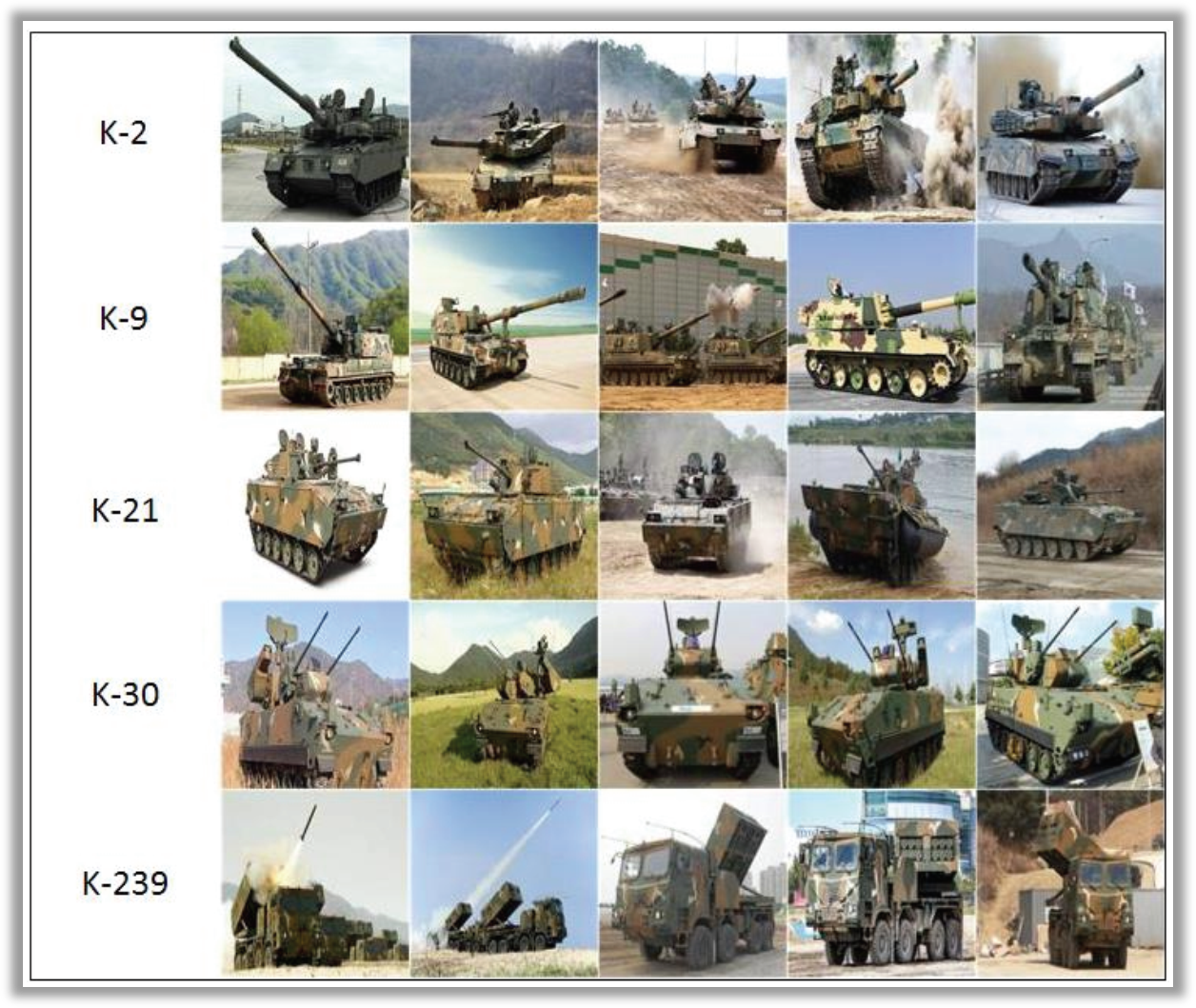Explainable artificial intelligence models for enhancing classification reliability of ground weapon systems
DOI:
https://doi.org/10.37944/jams.v6i3.216Keywords:
classification of ground weapon systems, explainable artificial intelligence, transfer learning, MobileNet, Grad-CAMAbstract
This study focused on the development of a reliable artificial intelligence (AI) model to enhance the classification reliability of ground weapon systems for surveillance and reconnaissance applications. The proposed AI model overcomes the limited data availability of military objects such as tanks, canons, and multiple-launch rockets by leveraging transfer learning and fine-tuning techniques. A comprehensive evaluation of 35 deep learning models using the publicly available Military-Vehicles dataset on Kaggle identified MobileNet as the most suitable model for ground weapon system classification. The selected MobileNet model achieved an average F1 score of 92% when tested on a dataset comprising five types of ground-weapon systems. In addition, the application of the explainable AI technique Grad-CAM provided insights into the decision-making process of the proposed model and verified its reliability. Real-world evaluations using frames extracted from training videos demonstrated promising accuracy for tanks, canons, and multiple-launch rockets. However, challenges related to object occlusion and the absence of target objects in the images were observed, which resulted in misclassifications. Overall, this study contributes to the development of explainable and reliable AI models for enhancing the performance of ground surveillance and reconnaissance systems.
Metrics
References
Choi, J. H. (2021). Trends and Prospects of Small Satellite Constellation for ISR Mission. In Proceedings of the KSAS 2021 Fall conference (pp. 1552-1553). Retrieved from https://www.dbpia.co.kr/pdf/pdfView.do?nodeId=NODE11031991&googleIPSandBox=false&mark=0&ipRange=false&b2cLoginYN=false&isPDFSizeAllowed=true&nodeHistoryTotalCnt=2&accessgl=Y&language=ko_KR&hasTopBanner=true
Howard, A. G., Zhu, M., Chen, B., Kalenichenko, D., Wang, W., Weyand, T., ... & Adam, H. (2017). Mobilenets: Efficient convolutional neural networks for mobile vision applications. arXiv preprint arXiv:1704.04861.
Hwang, J. M. & Ma, J. M. (2023). An Empirical Study on the Problem of Lack of Military Obstacle Data Using SinGAN. Journal of the Korea Academia-Industrial cooperation Society, 24(1), 310-317. https://doi.org/10.5762/KAIS.2023.24.1.310
Hwang, J. Y., Choi, B. A., Lee, J. H., & Bae, J. H. (2021). A Study on Transfer Learning-based Ensemble Model for Classification of Maneuver Weapon System. Journal of Korean Institute of Information Technology, 19(12), 1-10. https://doi.org/10.14801/jkiit.2021.19.12.1
Hwang, K. S & Ma, J. M. (2022). Improvement of Object Detection Performance for Enemy Tanks Using the Combination of Data Augmentation Models. Korean Journal of Computational Design and Engineering, 27(2), 148-159. https://doi.org/10.7315/CDE.2022.148
Joo, J. Y. (2020). A Study on Multi Domain Operations in U.S. Army. The Quarterly Journal of Defense Policy Studies, 36(1), 9-41. https://doi.org/10.22883/jdps.2020.36.1.001
Kim, J. H., Kim, T. W., Kim, S. C., & Ryu, J. Y. (2021). Transfer Learning based Intelligent Target Detection and Identification Model Analysis for Unmanned Recon Vehicle. Journal of the Military Operations Research Society of Korea, 47(2), 26-35. https://www.dbpia.co.kr/journal/articleDetail?nodeId=NODE11062013
Lee, J. Y. (2018). Manned-Unmanned Collaborative Combat System(MUM-CCS) Operation Concept and Development Direction. Korea Research Institute for National Strategy KRINS QUARTERLY, 3(3). 193– 216. https://doi.org/10.46322/krinsq.3.3.6.
Lee, S. G., & Jang, S. G. (2022). Necessity of establishing an open source military R&D platform to promote AI development in defense. Journal of Advances in Military Studies, 5(3), 23-42. https://doi.org/10.37944/jams.v5i3.177
Lee, Y. G., & Ma, J. M. (2023). A Comparative Study on the Performance of CNN Models for Classification of Artillery Weapon Systems. Journal of Korea Academia-Industrial cooperation Society, 24(1), 344-350. https://doi.org/10.5762/KAIS.2023.24.1.344
Lim, S. G. & Kang, D. S. (2021) Identifications and Evaluation of Tank Nationality using YOLO Algorithm. KIISE Transactions on Computing Practices, 27(12), 555-562. https://doi.org/10.5626/KTCP.2021.27.12.555
Nam, D. H., Im, T. H., Lee, D. J., & Cho, S. G (2020). Mosaic Warfare of the Fourth Industrial Revolution. Journal of National Defense Studies, 63(3), 141-170. https://doi.org/10.23011/jnds.2020.63.3.006
Pan, S. J., & Yang, Q. (2009). A survey on transfer learning. IEEE Transactions on knowledge and data engineering, 22(10), 1345-1359. https://doi.org/10.1109/TKDE.2009.191
Park, J. H., Lee, B. D., & Sunwoo, M. H. (2021). MaskSLIC based CNN Classification Model for Mammogram Feature Extraction. Journal of the Institute of Electronics and Information Engineers, 58(10), 59-67. https://doi.org/10.5573/ieie.2021.58.10.59
Ryu, J. M & Ma, J. M. (2022). Automatic Target Recognition of Military SAR Images Using Super-Resolution based Convolutional Neural Network. Journal of Institute of Control, Robotics and Systems, 28(1), 22-27. https://doi.org/10.5302/J.ICROS.2022.21.0178
Selvaraju, R. R., Cogswell, M., Das, A., Vedantam, R., Parikh, D., & Batra, D. (2017). Grad-cam: Visual explanations from deep networks via gradient-based localization. In Proceedings of the IEEE international conference on computer vision (pp. 618-626). Retrieved from https://openaccess.thecvf.com/content_iccv_2017/html/Selvaraju_Grad-CAM_Visual_Explanations_ICCV_2017_paper.html
Yang. D. H. (2020). A Vehicle Classification Method in Thermal Video Sequences using both Shape and Local Features. Journal of IKEEE, 24(1), 97-105. https://doi.org/10.7471/ikeee.2020.24.1.97
Zhou, B., Khosla, A., Lapedriza, A., Oliva, A., & Torralba, A. (2016). Learning deep features for discriminative localization. In Proceedings of the IEEE conference on computer vision and pattern recognition (pp. 2921-2929). https://openaccess.thecvf.com/content_cvpr_2016/html/Zhou_Learning_Deep_Features_CVPR_2016_paper.html

Downloads
Published
How to Cite
Issue
Section
License
Copyright (c) 2024 Journal of Advances in Military Studies

This work is licensed under a Creative Commons Attribution 4.0 International License.

This work is licensed under a Creative Commons Attribution 4.0 International License.

이 저작물은 크리에이티브 커먼즈 저작자표시 4.0 국제 라이선스에 따라 이용할 수 있습니다.






